In order to see the canyons from the inside, we signed up for an all-day tour of the canyons led by a Navajo guide. The tour goes up Canyon de Chelly as far as Spider Rock and up Canyon Del Muerto as far as Mummy Cave. The round trip distance is about 60 miles.
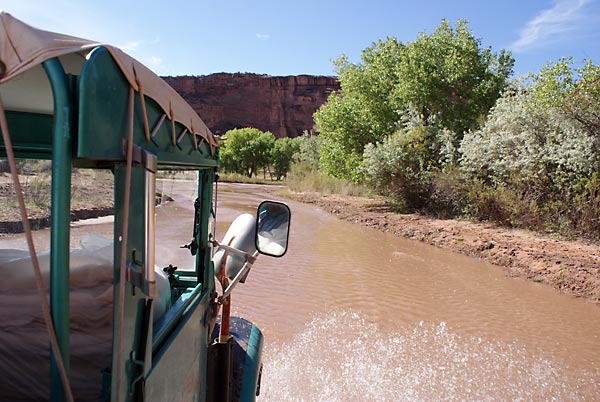
Our first impression of driving into the canyons was that we were driving up a river. Our guide told us that, because a lot of water was being released from a lake in the mountains upstream, there is a lot of water in the canyon and our roadway became a channel for the water.

This is our vehicle for the tour. It is a high clearance, six-wheel-drive truck powered by propane. Although the truck had seats on the back for 24 people, we had only 11 on our tour, so we could spread out some. I asked the driver if he ever got it stuck in the mud; he answered, "Many times.", and then explained that he had a winch on the front to pull it out. If that didn't work, he could use the CB radio to ask for help. As a last resort, he would walk out to get help. Fortunately, he didn't need to do any of these on our tour.

The Anasazi ruins near the junction of Canyon de Chelly and Canyon del Muerto. Although we had seen this place from the Junction overlook on the South Rim drive, we had missed seeing these ruins.
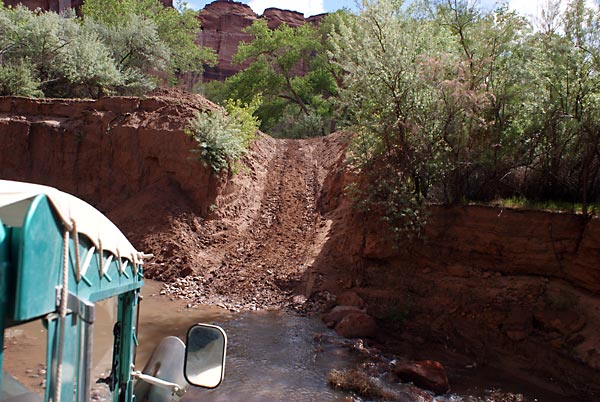
As we got farther up into the canyon, the river and the roadway parted company. The roadway crossed several streams; no bridges, you just drive through the water and hope for the best.
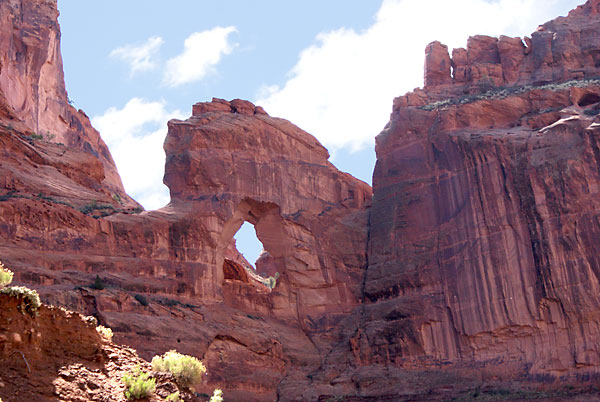
Window Rock.
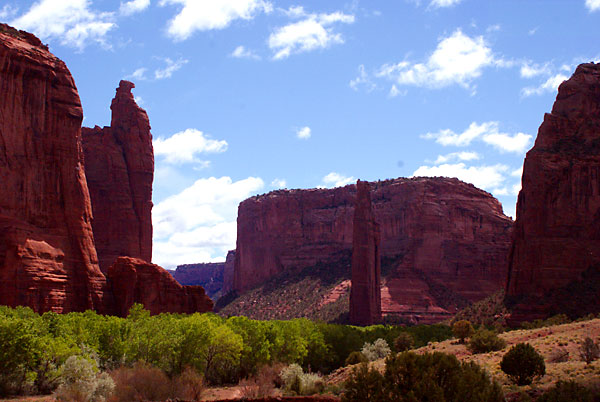
Spider Rock, as seen from the canyon floor. It is a pretty impressive rock pillar, seen from either above, or from this view.
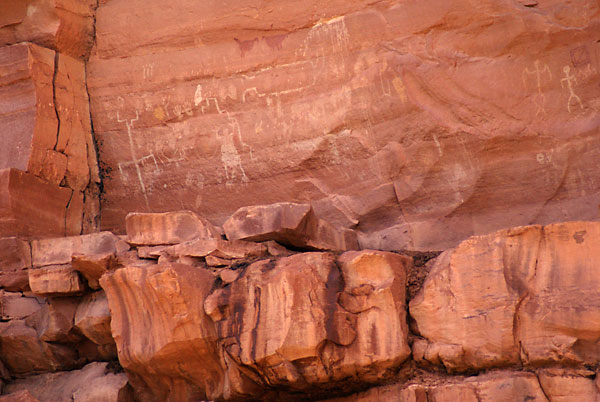
Pictographs on the canyon wall near Spider Rock. This is as far as we went up Canyon de Chelly. We then turned around and went back to the junction with Canyon del Muerto and up it.

A Navajo farm in Canyon del Muerto. Our guide said that there were 20 - 30 Navajo families living in the canyon. Some of them till the soil and plant crops, and some have cattle. There is no electricity or water, so the farmers have their own generators for electricity. They have to bring in their own water. Our guide said that the two blue barrels in this picture were fresh water; the farmers would need to go out every other day to get water to refill the barrels.

Anasazi pictographs on a canyon wall.

Navajo venders at the Antelope ruins. At most places where we stopped, there were Navajo selling jewelry or artwork. They are especially known for silversmithing and weaving. We did find the venders pleasant and not at all pushy, not like the "Hello Markets" in China. What they had to sell was very beautiful, and you have to admire them for trying to make a living, especially when the options for them were rather limited.

Navajo pictographs on the canyon walls. Note the people on horsback; the story behind the paintings probably has to do with the Spanish soldiers who came into the area looking for gold and taking Navajo as slaves.
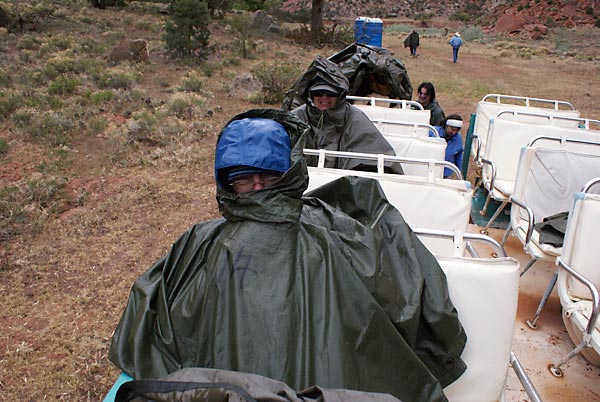
After we left Antelope ruins heading for Mummy Cave, the rain started. Sitting in the open on the back of a moving truck, it was cold and wet. Fortunately, the driver passed out blankets and rain ponchos to help us get through it. That is Nancy under that poncho. Are we having fun yet? Fortunately, we got back to civilization before hyperthermia set in.
Next stop: Cortez, Colorado.